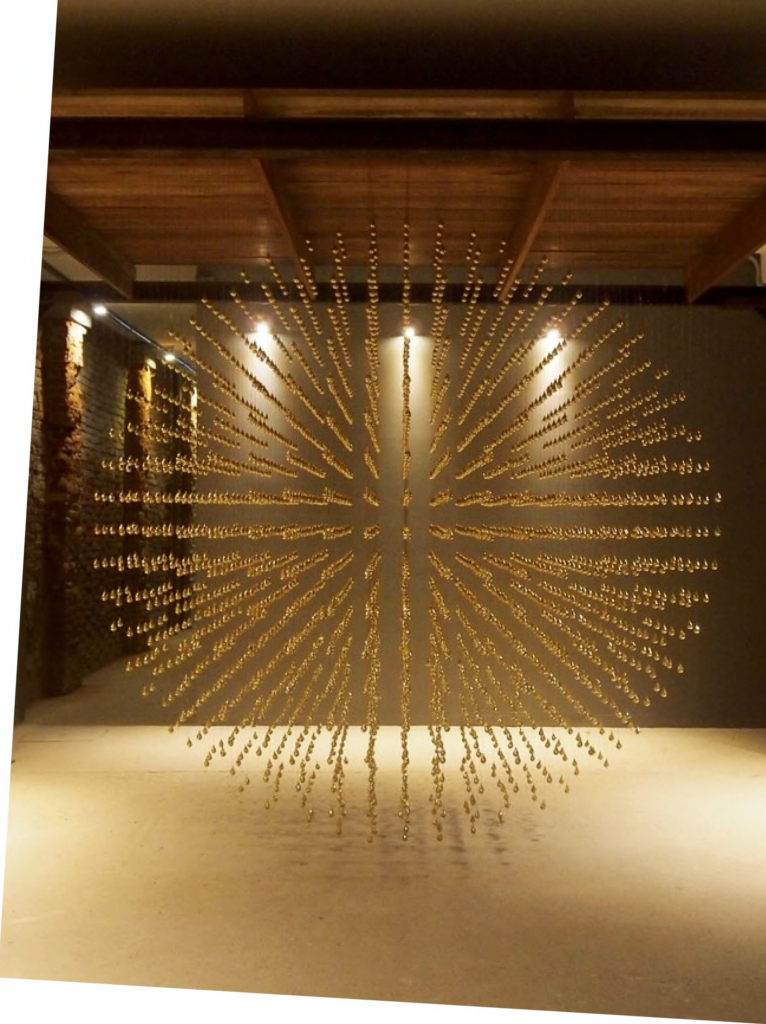ARIN RUNGJANG
Born in 1975 in the Thai capital, Bangkok, where he lives and works
Golden Teardrop
2013

Arin Rungjang is known for video and installation-based works that revisit minor and major histories. His works read history not as a linear trajectory or grand narrative but a complex network of stories traversing the past, present, personal, and political. After graduating with a BFA in graphic arts from Silpakorn University in 2002, Runjang went on to participate in landmark regional and international exhibitions, notably representing Thailand at the 55th Venice Biennale in 2013. Rungjang received the Silpathorn Award in visual art from Thailand’s Ministry of Culture in 2020.
“History is like the yolk that was thrown away, like the birth of ovos moles,” Rungjang muses aloud in a letter to a friend, one of two voiceover tracks narrating the single-channel film and installation Golden Teardrop (2013). Telling the story of the link between this Portuguese egg-yolk sweet and the popular Thai dessert thong yod, food becomes a thematic apparatus through which the artist interweaves disparate biographies and geographies across time. The film begins with the personal story of a Japanese woman living in Thailand, recounting her life as marked by a matrilineally inherited love of culinary exploration and a family history haunted by the experiences of the Hiroshima and Nagasaki bombings. Incongruently but profoundly, her story intersects with that of Maria Guyomar de Pina, a Catholic woman of Japanese, Portuguese, and Bengali ancestry who was born in Ayutthaya during the reign of King Narai in the seventeenth century. She was married to the infamous Greek adventurer Constantine Phaulkon, who was brutally executed during the 1688 Siamese Revolution for his role in seeding French influence in the Ayutthaya Kingdom. After unsuccessfully fleeing Ayutthaya, the widowed Guyomar de Pina became a cook for the Siamese court. It is believed that the popular Thai dessert thong yod originates from her incorporation of traditional Portuguese dessert recipes combining egg yolk and sugar, such as the fifteenth-century ovos moles, into the royal menus.
Cutting across five centuries of trade, war, and revolution, the story of thong yod unravels little-known fragments of Siamese history and its early forays in world politics and international trade. The desert, literally meaning “golden teardrop,” is given another form by Rungjang in his spherical installation of six thousand suspended drop-like brass shapes, a sculptural articulation of silent tears, evoking Thailand’s fraught past.
